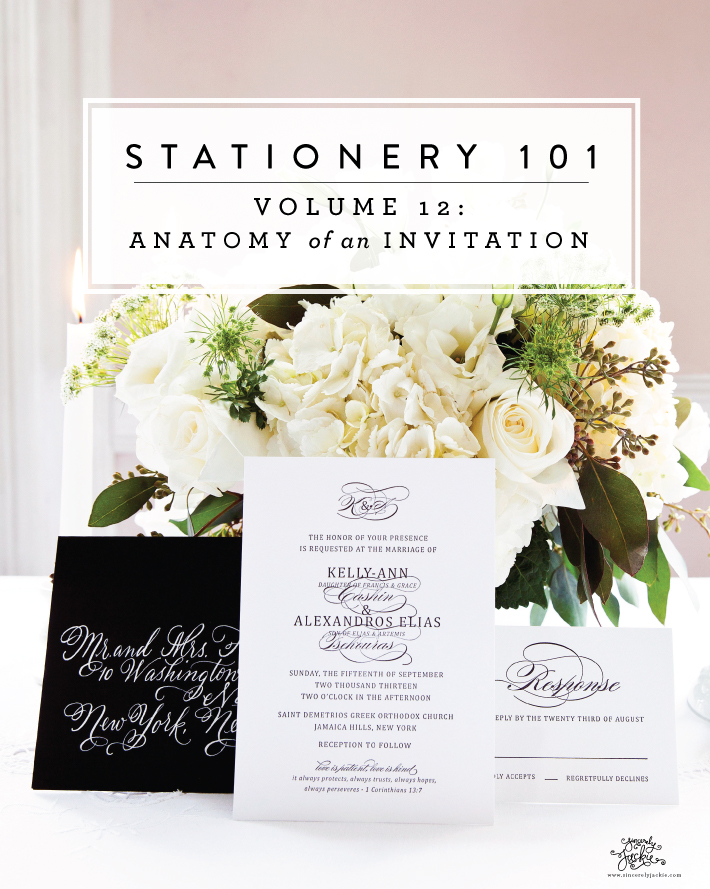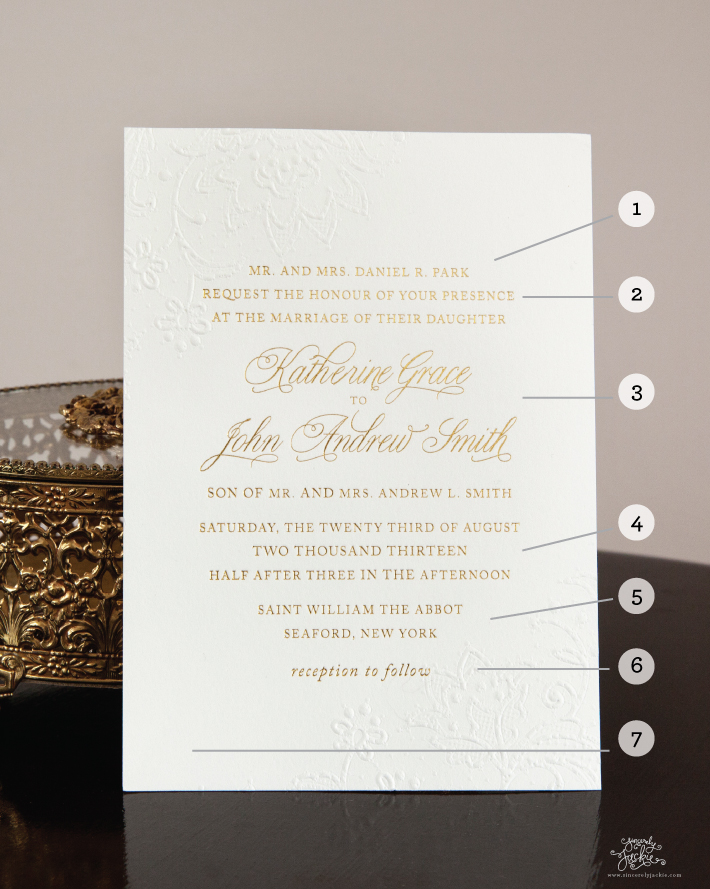Stationery 101, Volume 12: Anatomy of an Invitation

When I first started working up a blogging calendar, it really felt like work. I was worried that I wouldn't be able to keep up with the regiment, or that I would run out of interesting topics to discuss. What I never expected was to love blogging as much as I do. Although, when I think about it, I'm not surprise at all. I love to write, I love to share, and I love anything that feels organized (like a blogging calendar).
January was a pretty big milestone for me - I did not miss a single day of blogging. Clap, clap, clap! I've already got all of my Stationery 101 topics mapped out for February, too, so let's keep the momentum going.
Today I want to start with something I talk to every one of my brides about. The traditional anatomy of an invitation. Over the next few weeks I'll be discussing some variations to the traditional invitation anatomy, but for today, baby steps.

The Delicate invitation is one of my most traditional designs, so it makes the perfect guide for the following 7 main invitation elements.
1- THE HOST LINE: Optional. The first lines of the invitation are traditionally reserved for whoever is hosting (ie, paying) for the event. This can be the bride's parents, groom's parents, all parents, or something more communal like "together with out families", if everybody is contributing. If you're finding that the host line is tricky or sensitive (divorced parents, deceased parents, people other than parents contributing, blended families, etc) you can leave the host line out all together.
2- REQUEST/INVITATION LINE: This is where you actually invite your guests to your event. There are a lot of ways to word this, but a very traditional line is "request the pleasure of your company at the marriage of...".
3- BRIDE AND GROOM NAMES: The bride's name always goes first on the invitation. If the host line includes the parents of the couple, you would not repeat last names for the bride and groom, but would instead have just the first and middle names. If the parents of the bride are in the host line, but the groom's parents are not included, you would have the first and middle name of the bride, followed by the groom's full name (first, middle, last).
4- DATE/TIME: You'd be surprised how many stories I've heard where couples forget to add the time, date, or year to their invitations! Be sure to spell out all numbers.
5- CEREMONY LOCATION: This may be a religious ceremony, or at the same venue as the reception.
6- RECEPTION LINE: Optional if ceremony and reception are at same location, although most people do include a line that says "reception to follow" or "formal reception following ceremony".
7- ATTIRE: Optional. You can add a line letting guests know what the appropriate attire is. Common verbiage include "formal attire requested", "black tie", "black tie optional", or "casual attired" for a more casual event.
The above 7 elements cover all aspects of a traditional invitation. There are a lot of variations these days, which I'll be talking about over the next few weeks. From having bold numbers, to only the first names for the bride and groom - couples are getting creative in how they invite guests to their big day!
Thank you for joining me in another Stationery 101 post! Don't forget to catch up on past Stationery 101 topics here, such as Letterpress 101, Foil Stamping 101, and Engraving 101.
Sincerely,

